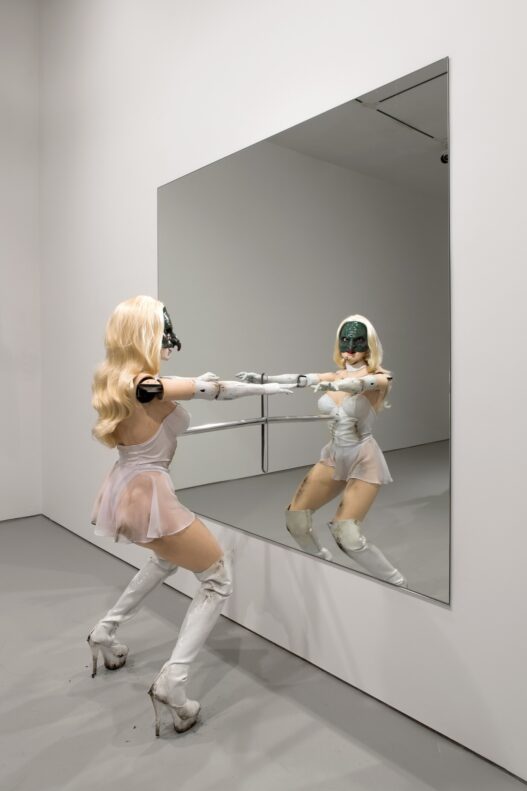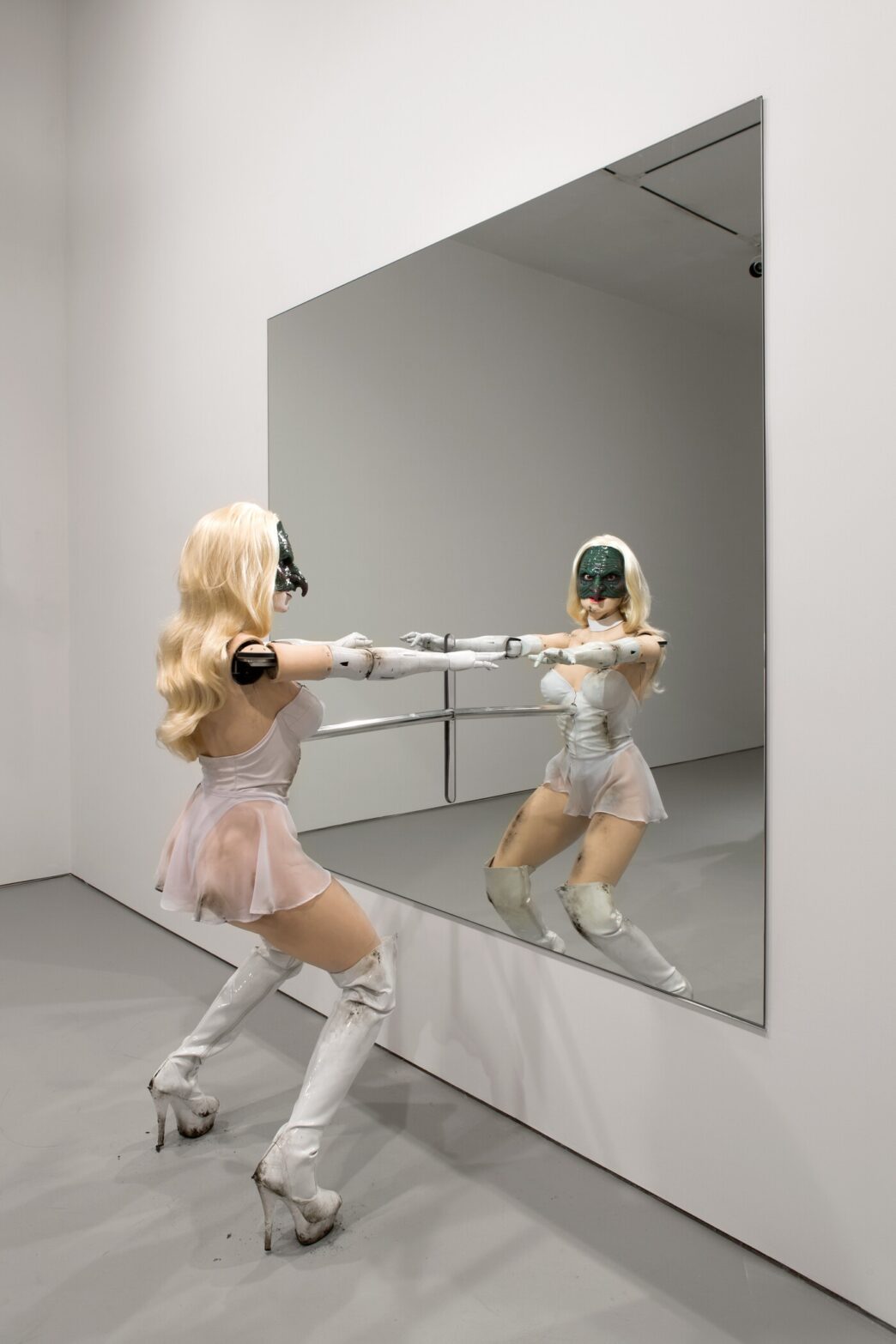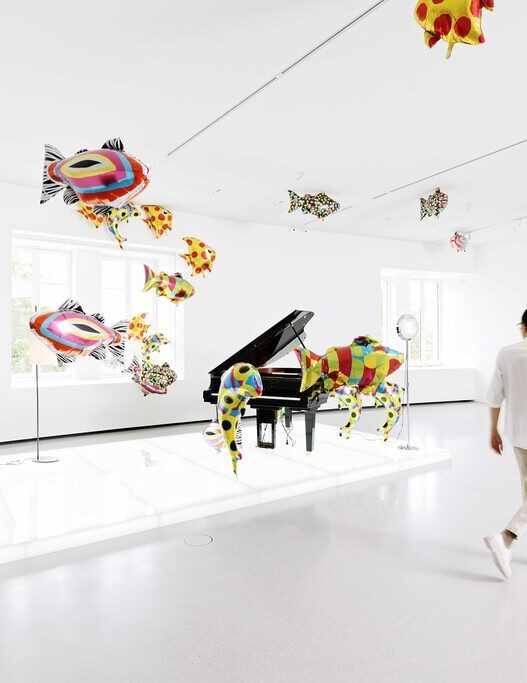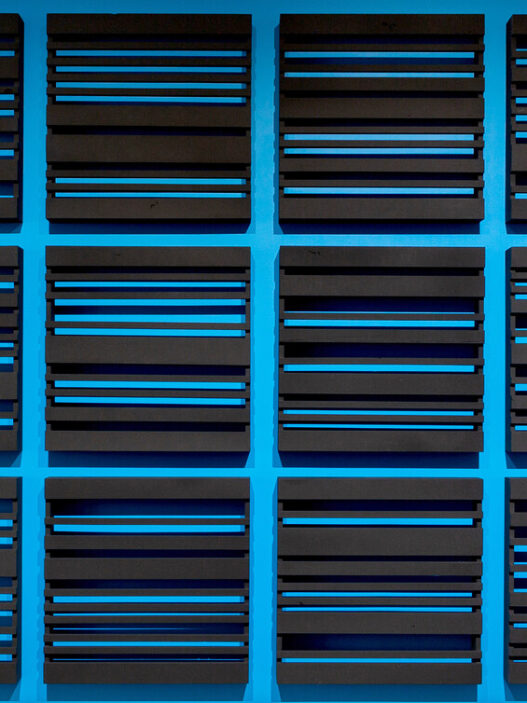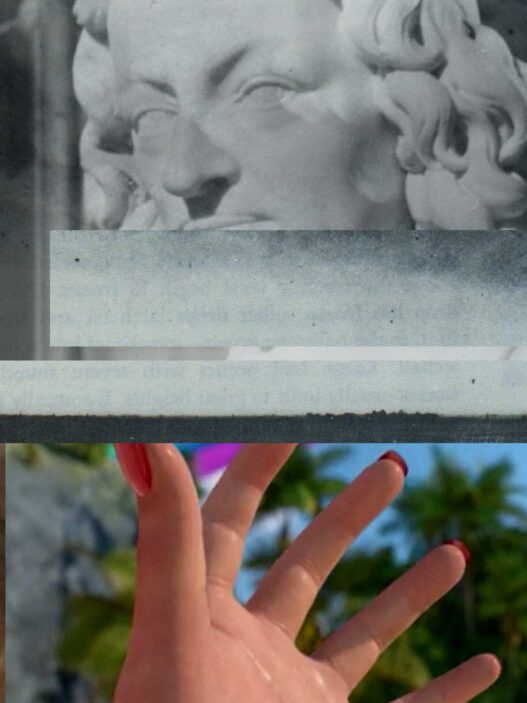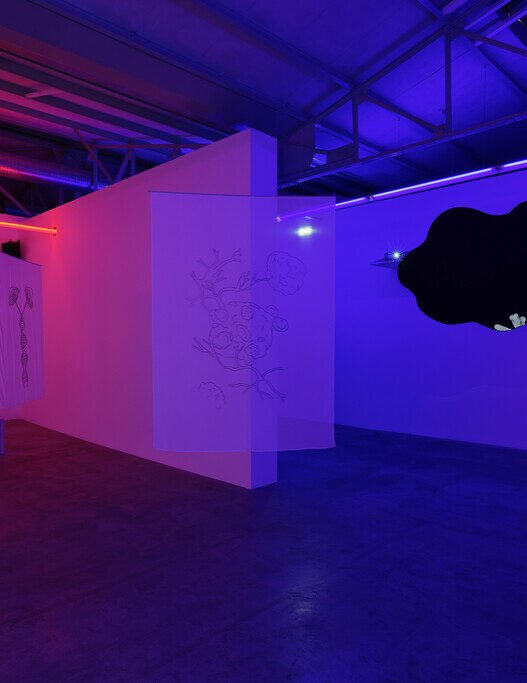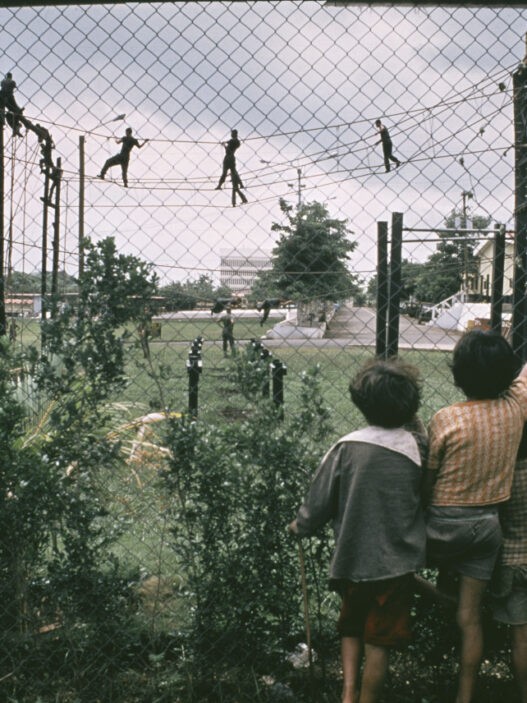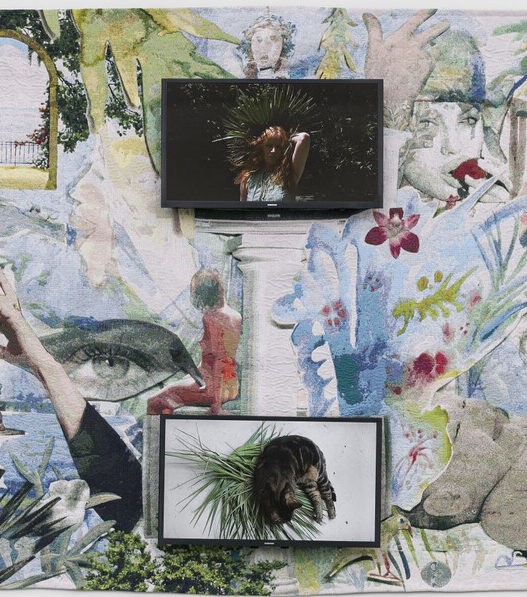July 16–October 9, 2022
Opening: July 15, 7–11pm
Artist’s talk with Jordan Wolfson: July 16, 11am–12pm, in dialogue with KUB director Thomas D. Trummer
The strong and unnerving works of Jordan Wolfson, produced in a variety of media and formats, question the conditions of art, technology, and mass media in modern society. The video game business, online videos, comic books, and facial recognition technologies are all sources of inspiration for Wolfson’s themes. His questions are unsettling, and his creations are anything but accommodating. How are pictures and data processed? How do technologies affect the way we think and perceive things? How do we handle problems like sexism, racism, and homophobia? What harm do our anxieties cause us?
In one of his works visitors find themselves in a virtual world, where skyscrapers soar beside them, as cars and yellow taxis pass along one of New York’s grand avenues. Street noise reverberates; it is everyday life in the big city. The 3D video is compelling alone in its uncanny proximity to reality. But a monstrous act begins to quickly unfold in the immediate vicinity, a man is beating another to death with a baseball bat. The viewers become witnesses, they see the victim ultimately bleed to death, implicating themselves by looking. Virtual reality, VR, becomes RV, Real Violence, 2017.
The artist’s capacity to produce recognizable yet unsettling visual forms is exemplified by House with Face, 2017. It shows a cute log home with a roof that resembles the face of a twisted, grimacing witch, with metal rings attached on the figure’s forehead, cheeks, and chin and sticking out from the head like piercings.
The ground floor of KUB is home to Artists Friends Racists, a sizable visual collage from 2021—the pandemic year. High-speed rotation of 20 wall-mounted holographic fans gives the appearance that images are whirling, pulsating, and shattering in space. A variety of famous and historic photographs of artists, as well as pictures of Wolfson himself, coexist with emojis, Stars of David, and cartoon figure arms.
Wolfson’s scorn for oppressive authorities and the covert and overt ways that racism is ingrained in contemporary white identity stand in contrast to the projections that reveal his respect and appreciation for his friends and fellow artists. Images in the work that illustrate the concept include white folks who appear self-satisfied in the mirror and Dutch people wearing blackface celebrating Zwarte Piet. Wolfson contrasts high and low, good and bad, charming and horrific by using Sesame Street episodes and images from the September 11th attacks. The fan numbers pop up in between, acting as a hidden countdown or a mysterious code that we are unable to comprehend.
The video work Raspberry Poser, 2012, is being screened on the first floor. The projection features a furious cartoon character, a condom roaming the streets of Soho, and an anarchy symbol that rapidly mutates into a heart and signs for the genders. Wolfson works through our fear of AIDS. Beads that look like candy or blood cells trickle out of the condom. Finally, the spiked sphere of a virus emerges, a shape we are now familiar with due to the pandemic. In this work, Jordan Wolfson confronts both sexual identity and inner conflicts, but provides no answers. Instead, Wolfson himself appears as a skinhead with a shaved head, roaming the parks of Paris. Raspberry Poser forgoes any irrevocable reality or clear moral assertions, and yet the video is still able to pose existential questions concerning love, life, desire, and death.
On the second floor, there are collages that Wolfson refers to as Wall Objects that are mounted on wood or metal alloy supports. They have photographic images and stickers all over them. Ropes or chains hang from them, and many of them have holes that are symmetrically drilled. The collages have elements of torture devices and workbenches in some of them. Some have a Star of David design. Virtual and fantastical worlds converge in the physical with imagery that denotes emotional iciness, the ominous, and the vindictive.
A robot dances in front of a mirror on the higher floor. Female Figure, 2014, wears blonde wig, white negligee, and knee-high boots. A green mask worn by a plague doctor reveals black, menacing eyes. Video technology has been transformed into sculpture by Wolfson. The go-go girl’s joints groan to the beat of popular music as she gracefully undulates her arms. “My mother is dead,” says Wolfson’s dirty character, who is intriguingly both repugnant and alluring. “My dad passed away. I’m gay.” The sculpture makes eye contact with the viewer through the mirror, which adds to the unsettling atmosphere.
Biography
Jordan Wolfson (b. 1980, New York), studied sculpture at Rhode Island School of Design. He lives and works in Los Angeles.
Solo exhibitions were on display at Moderna Museet in Stockholm (2019), Schinkel Pavillon in Berlin (2018), and the Pond Society, New Century Art Foundation in Shanghai (2017). In 2016 and 2017 Wolfson presented MANIC / LOVE / TRUTH / LOVE, an early career retrospective, at the Stedelijk Museum in Amsterdam, and 2015 at Cleveland Museum of Art. Further exhibitions were at the Stedelijk Museum voor Actuele Kunst (S.M.A.K.) in Ghent (2013), Chisenhale Gallery, London, and Kunsthalle Wien, Vienna, and REDCAT, Los Angeles (2012), Kunstsammlung Nordrhein-Westfalen, Dusseldorf (2011), CCA Wattis Institute for Contemporary Arts, San Francisco (2009), Swiss Institute of Contemporary Art, New York (2008), Galleria d’Arte Moderna e Contemporanea di Bergamo (2007), and Kunsthalle Zürich, Zurich (2004).
In 2009, he received the Cartier Award from the Frieze Foundation.
Karl-Tizian-Platz
6900 Bregenz
Austria
Hours: Tuesday–Sunday 10am–6pm,
Thursday 10am–8pm
T +43 5574 485940
[email protected]









